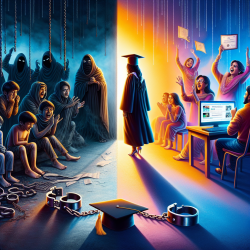Introduction
In recent years, the world has been exposed to the shocking revelations of ISIS's educational system, which includes a programming curriculum that is deeply intertwined with religious and military indoctrination. This blog aims to shed light on the findings from the research article titled "The Programming Curriculum within ISIS," which analyzed the content of ISIS's official programming textbook. By understanding the pedagogical intentions and the curriculum's focus, practitioners can improve their skills and contribute to rebuilding impacted educational systems.
Pedagogical Intentions of the Curriculum
The programming curriculum within ISIS is primarily driven by religious and military objectives rather than the development of 21st-century skills such as computational thinking. The textbook emphasizes the importance of programming for jihad and the establishment of the caliphate, rather than fostering creativity, problem-solving, or discovery learning. This approach highlights the instrumentalization of education for ideological purposes, which can be detrimental to the development of essential skills in young learners.
Programming Curriculum Analysis
Despite the logical progression of learning activities, the curriculum places too little emphasis on higher-order thinking skills as outlined in Bloom's taxonomy. The focus is on memorization and reproduction of predetermined codes, with limited opportunities for students to apply their knowledge in different contexts. This approach contrasts sharply with international programming curricula, which emphasize problem-solving, creativity, and computational thinking.
Military and Religious Indoctrination Elements
The textbook is rich in elements of military and religious indoctrination, with more than a third of the activities involving military or religious contexts. The iconography and contextual elements used in the learning activities contribute to normalizing violence and war, promoting desensitization to violence among young learners. This indoctrination effort is evident in the use of military imagery and narratives that justify violence in the name of religious or political ideas.
Conclusion
The analysis of ISIS's programming curriculum reveals a concerning focus on indoctrination rather than skill development. The curriculum fails to prepare students for the challenges of the 21st century, as it does not encourage the development of critical thinking, creativity, or problem-solving skills. Understanding this approach to education can aid in the development of initiatives aimed at de-indoctrinating and demilitarizing affected youth and rebuilding educational systems in impacted regions.
To read the original research paper, please follow this link: The Programming Curriculum within ISIS.










